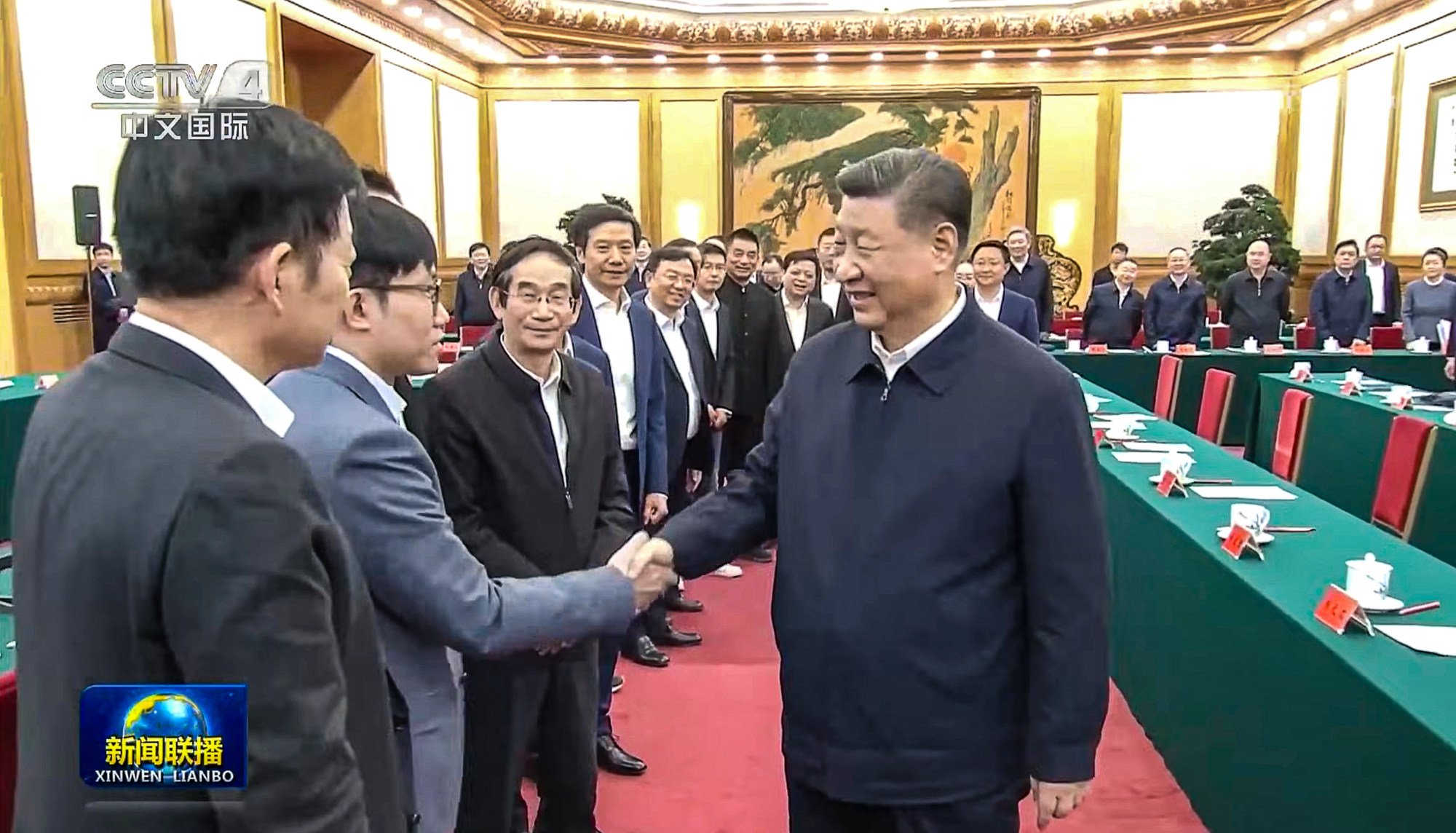
Chinese artificial intelligence (AI) start-up DeepSeek has been prioritising research over quick financial gains in the month following the release of its reasoning model that sent shock waves across the world, according to sources and media reports.
Since its R1 reasoning model made headlines in Silicon Valley and Wall Street, the Hangzhou-based start-up founded by Liang Wenfeng and spun out of a hedge fund business, has maintained a low profile, with minimal communication with the public outside the developer community.
The 40-year-old founder has not made any public comments or accepted media interviews in the past month. Although he was briefly shown by China’s state broadcaster attending a high-profile symposium chaired by President Xi Jinping last week, he did not contribute any quotes to the state media’s readout of the meeting.
Do you have questions about the biggest topics and trends from around the world? Get the answers with SCMP Knowledge, our new platform of curated content with explainers, FAQs, analyses and infographics brought to you by our award-winning team.
Liang’s only public presence of late has been as a co-author on a paper titled “Native Sparse Attention: Hardware-Aligned and Natively Trainable Sparse Attention”, along with 14 others. At least 12 of the 15 authors on that paper also contributed to the paper on R1, showing that Liang was directly involved in the research alongside DeepSeek’s young scientists.

A source close to the company, who declined to be named, said DeepSeek is in no rush to conduct further fundraising or engage in new commercial activities. Instead, Liang is focused on advancing artificial general intelligence (AGI) by improving model efficiency and capabilities with minimal resources. AGI refers to a type of AI that reaches or surpasses human cognitive capabilities.
“Whether it is a wise choice, and how long it can sustain the research, only time can tell,” the person said about DeepSeek’s key priorities. “A key problem is that the scaling law still exists, and it is hard to maintain a leading edge just by algorithm improvement.”
DeepSeek did not respond to a request for comment on Wednesday.
While DeepSeek has turned itself into one of China’s most celebrated and respected enterprises, the company has positioned itself as a low-profile start-up, turning away visitors and potential investors knocking at its door. The company has clarified that it has only three official social media accounts on X, WeChat, and RedNote.
The firm has stayed mum about its team, internal structure and research schedules. Reuters this week reported that DeepSeek is accelerating the launch of the successor to its R1 model. The firm had planned to release R2 in early May, but it wants it out as early as possible, according to the report. DeepSeek’s previous track record was a seven-month gap between its V2 large language model (LLM) in May 2024, and the updated V3, launched in December. R1, a reasoning model based on V3, was released in January.
Liang’s team has continued to share its research achievements with the developer community. The firm made good on a promise this week to share technical details on its AI infrastructure with the release of three open-source code repositories, which shed light on how DeepSeek built its low-cost, high-performance AI models.
Developers have praised DeepSeek’s move for facilitating improvements in the field. A small team of DeepSeek researchers attended a “closed-door” session at the Global Developer Conference in Shanghai last weekend, local media reported.
In his two previous interviews with Chinese tech news publication 36Kr, Liang said the ultimate goal of DeepSeek is to achieve AGI, a mission it appears to be putting ahead of business interests with its focus on open-sourcing its tech.
“Our destination is AGI,” Liang said in his interview with the publication last July. “LLM might be a necessary path leading to AGI.”
Asked about when AGI could be achieved, Liang said then that “it may take two years, five years or even 10 years, but eventually it will be achieved while we are alive”.
More from South China Morning Post:
- DeepSeek spurs embrace of open-source AI ecosystem at Shanghai industry event
- DeepSeek founder provides clue on start-up’s AI priorities in new technical study
- China gets taste of victory in US tech war thanks to talent, supply chains, organisation
- What did China’s tech entrepreneurs tell Xi Jinping at the symposium?
- DeepSeek’s disclosure of AI technical details praised by open-source community
For the latest news from the South China Morning Post download our mobile app. Copyright 2025.








































